What Are There Dress and Grooming Codes For Culinary Students?
If you were thinking of attending a culinary school and wondered what to expect regarding grooming or dress codes, I visited a couple of schools to see what they expected. One of the schools is a big-name program, and the other is a small community college.
You will not be surprised to learn that both programs have similar dress and grooming codes. The codes vary from big-for-profit culinary schools to community colleges, but they generally have a similar theme. Most schools want to promote an environment in which students will dress professionally or “dress for success.”
The working dress code will depend on and be determined where you end up working, but most schools have a pretty stringent code they want you to adhere to. Whether the school provides you with a uniform as part of your tuition or you are held responsible for buying it, either from the school or from an outside source, these are the items you will be expected to have. The dress and grooming codes enforced in culinary school will transfer to any professional culinary job.
Apron
Some schools provide aprons for their students with their logos in place, others ask you to buy aprons from the school, and some schools do not care about logos and require one. Typically, you will be wearing a white “bistro” style apron that is mid-length, which means below the knee but not below mid-calf. These aprons usually need to be cleaned and pressed.
Chef’s Jacket and Neckerchiefs
The white chef’s jacket should be long-sleeved, double-breasted, and worn with the sleeves cuffed no further than the wrists unless told otherwise. The double-breasted panel on the front is useful because it can quickly be reversed to hide stains.
Sometimes, it is customary to have your name and logo embroidered on the jacket. The jacket’s breast pocket can usually contain one clip-on pen, thermometer, and notebook.
It is appropriate to wear only solid white undergarments under the chef’s jacket. Sheer or see-through clothing, as well as leather or denim clothing, is not usually permitted.
The Neckerchiefs are white, clean, and worn at all times.
Pants
Like the other garments, the chef’s pants should be clean, wrinkle-free, and hemmed above the natural heel and below the ankle. Most schools are more lenient about these loose cotton pants. They usually come in patterns, like checkered or colors that hide stains easily.
Shoes and Socks
The shoes should be black leather with skid-resistant soles. Chef’s clogs are acceptable as long as they are clean; however, no tennis or athletic shoes should be worn. The socks paired with the shoes should be white or dark colored, clean, and fit to cover the ankle.
Chef’s Hat
Most, but not all, culinary schools require a toque chef hat, toque being the French term for a chef’s tall white hat. Some other schools allow hats in the form of baseball caps, skull caps, or berets. To learn more about Chef Hats and their history.
Grooming
Like the culinary dress codes, grooming standards are important for professionalism, sanitation, and safety in the kitchen.
Facial Hair
You must be clean-shaven or, in some cases, neatly trimmed. Sideburns should not exceed the middle of the ear, and beards are not permitted. However, goatees and mustaches are usually allowed if they are neatly trimmed and kept close to the face.
Different schools may allow their students different lengths of facial hair, but for the most part, the hair needs to be kept short and manicured.
Hair
Hair should be neat and cleanly trimmed. If it is not short, it needs to be in a ponytail retrained above the collar by a hairnet or pins, not just tucked into a chef’s hat or coat.
Hair should be restrained professionally with black or white barrettes or scrunchies. Most schools also require appropriate natural hair color, such as neutral shades of black, brown, and blonde. Bangs must be kept to the top of the eyebrow.
Fingernails
Fingernails need to be short, neat, and clean, including free of polish. They must also be regularly trimmed to prevent cross-contamination.
Jewelry
No facial jewelry, such as in eyebrows, eyelids, lips, tongue, upper ear, or nose, is permitted with the culinary dress code, and it cannot just be covered with a bandage. The only acceptable jewelry is one plain ring and one watch. The culinary school may issue pins, which can be worn on the front of the uniform as they state.
Conclusion
These are the basics of the Culinary Dress and Grooming Codes that are required in schools and many professional kitchens.
For the most part, a chef’s uniform usually costs between $80 and $300 and can be an additional cost to the tuition and typical costs of culinary school. However, it is important to check with the establishment for specific instructions on the codes, as they may differ slightly.
Uniforms should always be clean at the beginning of each day. Most schools will have some deduction regarding dress and grooming rules. These codes create a professional learning environment and ensure safety and sanitation in the kitchen.
Most culinary schools have strict dress and grooming codes, so it is important to follow them verbatim.
Is A Culinary Career Right For Me?


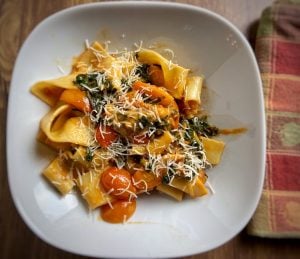
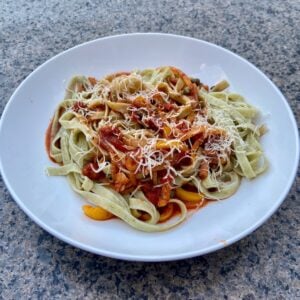


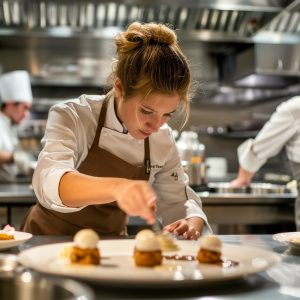

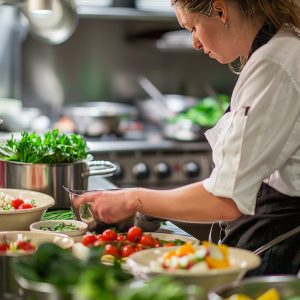
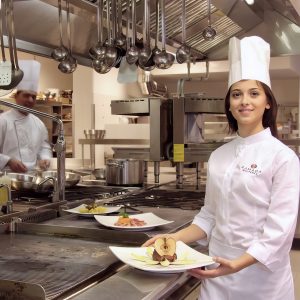
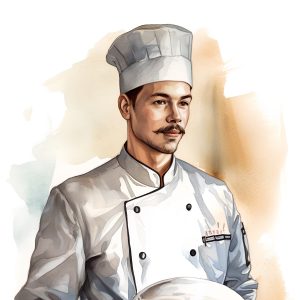





One Response
Can I wear hijab